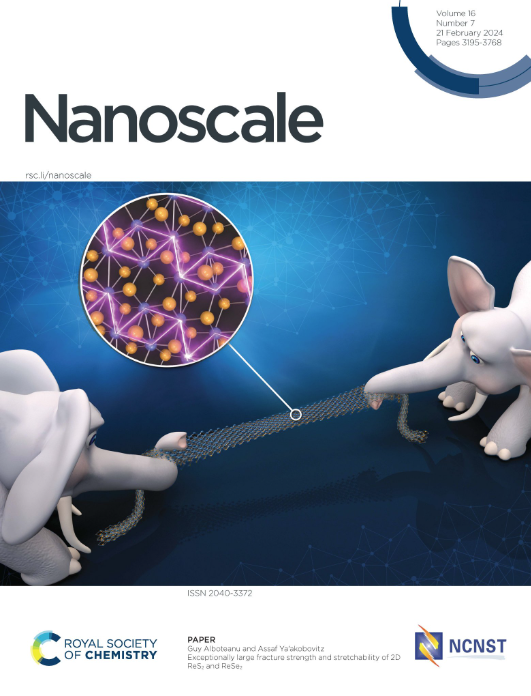The role of polymer coatings in lipid membrane penetration by graphene oxide dots
IF 5.1
3区 材料科学
Q1 CHEMISTRY, MULTIDISCIPLINARY
引用次数: 0
Abstract
Understanding the cell membrane penetration process of biomedical nanosystems and its dependence on nanomaterial properties and surface functionalization is crucial for the rational design of safe and efficient cellular internalization strategies. Computer simulations are powerful tools to evaluate the thermodynamic aspects of the process and to elucidate its underlying molecular mechanisms. In this work, the interaction between uncoated or polymer-coated graphene oxide (GO) dots and lipid bilayer models is investigated by coarse-grained (CG) molecular dynamics (MD) simulations. We first validate the coarse-grained model against all-atom MD simulations (AAMD). Then, we perform CGMD simulations and free energy calculations to assess the effect of the polymeric coating and of its features (grafting density, polymer end-group charge and polymer hydrophilic/hydrophobic character) on the interaction between GO dots of realistic size and lipid membranes. We find that the membrane penetration of GO dots is spontaneous when coated with a low-density polyethylene glycol (PEG) layer, while a high-density PEG coating prevents the penetration, and a mixed PEG/polyethylene (PE) coating excessively stabilizes the nanosystem in the inner membrane region. These findings will help to fine-tune how GO dots interact with cellular membranes.聚合物涂层在氧化石墨烯点穿透脂膜中的作用
了解生物医学纳米系统的细胞膜渗透过程及其对纳米材料性质和表面功能化的依赖,对于合理设计安全有效的细胞内化策略至关重要。计算机模拟是评估该过程热力学方面和阐明其潜在分子机制的有力工具。在这项工作中,通过粗粒度(CG)分子动力学(MD)模拟研究了未涂覆或聚合物涂覆的氧化石墨烯(GO)点与脂质双分子层模型之间的相互作用。我们首先针对全原子MD模拟(AAMD)验证了粗粒度模型。然后,我们进行了CGMD模拟和自由能计算,以评估聚合物涂层及其特征(接枝密度、聚合物端基电荷和聚合物亲疏水特性)对实际尺寸的氧化石墨烯点与脂质膜之间相互作用的影响。我们发现,在低密度聚乙二醇(PEG)涂层下,氧化石墨烯点的膜渗透是自发的,而高密度聚乙二醇涂层会阻止这种渗透,而混合PEG/聚乙烯(PE)涂层会在膜内区域过度稳定纳米系统。这些发现将有助于微调氧化石墨烯点与细胞膜的相互作用。
本文章由计算机程序翻译,如有差异,请以英文原文为准。
求助全文
约1分钟内获得全文
求助全文
来源期刊

Nanoscale
CHEMISTRY, MULTIDISCIPLINARY-NANOSCIENCE & NANOTECHNOLOGY
CiteScore
12.10
自引率
3.00%
发文量
1628
审稿时长
1.6 months
期刊介绍:
Nanoscale is a high-impact international journal, publishing high-quality research across nanoscience and nanotechnology. Nanoscale publishes a full mix of research articles on experimental and theoretical work, including reviews, communications, and full papers.Highly interdisciplinary, this journal appeals to scientists, researchers and professionals interested in nanoscience and nanotechnology, quantum materials and quantum technology, including the areas of physics, chemistry, biology, medicine, materials, energy/environment, information technology, detection science, healthcare and drug discovery, and electronics.
 求助内容:
求助内容: 应助结果提醒方式:
应助结果提醒方式:


